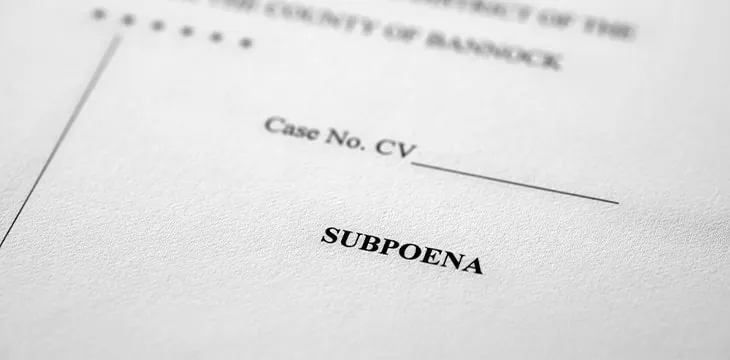|
Getting your Trinity Audio player ready...
|
A U.S. bankruptcy judge has on Tuesday frozen the U.S. assets of the embattled digital currency hedge fund Three Arrows Capital (3AC) and authorized liquidators to subpoena its founders as well as entities which hold information relating to their business.
The order was made in response to an emergency motion by liquidators, who say that 3AC’s founders—Su Zhu and Kyle Davies—have been uncooperative, sparking concern that 3AC leadership are siphoning funds in advance of formal liquidation proceedings.
3AC collapsed spectacularly beginning in May. The fund had made a business of borrowing money from parties throughout the digital asset industry to finance investments in new and growing projects. One of these projects was terraUSD (UST), a stablecoin which maintained its peg algorithmically. By May, 3AC’s exposure to the stablecoin was anywhere between $200 million and $600 million. When the coin lost its peg amid a wider liquidity crunch, investors ran for the door, causing the price of UST to plummet almost overnight and wiping out billions worth of investments made on the basis of the asset’s promised stability.
The firm was inevitably forced into liquidation, and it filed insolvency proceedings in the British Virgin Islands, where 3AC is incorporated, as well as bankruptcy proceedings in New York. According to filings in the New York case made by 3AC’s liquidators, the fund’s founders—Su Zhu and Kyle Davies—have been uncooperative with the process. This led them to file a motion to grant subpoenas over Zhu, Davies and other relevant entities, compelling them to turn over information relating to 3AC’s assets and requiring the founders to appear in court.
3AC going supernova has served to demonstrate the main concern with the opaque interconnectedness of the digital asset industry. Companies that had made loans to 3AC are suddenly facing massive write-offs, an issue compounded by sliding asset prices across the board. One of these firms is broker Voyager Digital, which loaned 4AC 15,250 BTC and $350 million in USDC and was forced into bankruptcy after 3AC collapsed. Blockchain.com, which is owned by Blockchain Access, is also among 3AC’s creditors.
While the collapse of terraUSD is still reverberating throughout the industry, it seems inevitable that there will be new, different collapses coming in the near future. 3AC is just one of many that have taken and continue to take the ‘stability’ of stablecoins for granted. Terra’s collapse spelled the end for 3AC, but there continues to be an ecosystem around unproven stablecoins like Tether which pose similar—albeit not identical—systemic risks. Some try to downplay the UST chain reaction by saying that algorithmic stablecoins inevitably run on faith that the peg will be maintained, but the reality is that the most prominent and ingratiated stablecoins run on the same faith—only the faith is not placed in an algorithm but in the assets which the likes of Tether promise are supposedly backing them.
All evidence suggests that Tether is thinly backed, contrary to its own promises. That’s a major problem, because exposure to Tether is more ubiquitous than even terraUSD has turned out to be. For example, a report by Protos Media revealed hundreds of millions worth of Tether are flowing to the industry’s biggest names, including almost $700 million to 3AC. Nearly a billion dollars’ worth was sent straight to Blockchain Access—a firm already racing to recover what it can from 3AC.
In a sense, that 3AC ultimately fell victim to the terraUSD collapse saved the company from the much larger disaster waiting around the corner. For when enough people come around to the fact that Tether’s peg is just as ethereal as terraUSD’s, those industry players lucky enough to have survived this round of instablility are going to be facing one much worse.
Regulators are beginning to catch up to these impending problems. A U.S. bi-partisan bill introduced last month would obligate stablecoin issuers to make those coins redeemable for USD if those stablecoins are purporting to be fully asset-backed. The U.K. Treasury also recently recommended increased protections for stablecoin investors in the case of systemic failure. However, at least in the case of Tether, regulatory action is likely coming too late as much of the industry has already begun to revolve around Tether’s so-called stability judging by how much of Tether’s rampant printing goes straight to the unquestioning coffers of funds like 3AC.
Watch: The BSV Global Blockchain Convention panel, The Future of Financial Services on Blockchain: More Efficiency & Inclusion
https://www.youtube.com/watch?v=RzJsCRb6zt8&t=10942s

 07-05-2025
07-05-2025 





